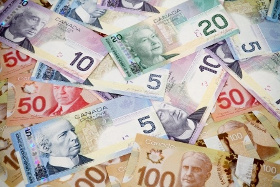The US dollar declined against the euro on Thursday following economic data in the United States that showed a small drop in prices at factory gates, which is an important indicator of inflation. The greenback also retreated against the British pound, despite the lack of positive releases in the United Kingdom today.
US producer prices dropped for the first time in about one and a half years in December, according to a fresh report from the Bureau of Labor Statistics. The producer price index for final demand fell 0.1% last month on a seasonally adjusted basis, following a gain of 0.4% in November. Analysts had expected an increase of 0.2%.
Over a period stretching over twelve months, the producer price index rose 2.6% in December from 3.1% in November. The index had gain 0.4% in October on a monthly basis, which pushed it higher before settling lower by the end of 2017. In 2016, the index increased 1.7%.
The report added that the core producer price index, which excludes prices of food, energy, and trade services had a small 0.1% gain last month following a 0.4% increase in November. In 2017, the core producer price index climbed 2.3% from 1.8% a year earlier.
The data showed that inflation may not accelerate as much as previously expected in 2018. However, traders are still hopeful that a tightening labor market and recent weakness in the dollar will push the inflation rate closer to the Federal Reserveâs 2% target this year.
A lower inflation reduces the chances of an interest rate hike from the Federal Reserve, which is a move that is widely seen as supportive for the US dollar. The central bank increases its interest rates three times last year, with three more hikes forecasted for 2018, however, this will depend on the inflation outlook.
A separate report that was published today showed an increase in the number of Americans who filed for unemployment benefits last week, which marked the fourth consecutive weekly increase. Initial unemployment claims rose to 261,000 in the week ended January 6 from 250,000 a week earlier, according to the Department of Labor.
EUR/USD traded at 1.2039 as of 14:50 GMT on Thursday, the pairâs highest level since January 8. EUR/USD began trading today at 1.1958. GBP/USD rose to 1.3538, todayâs highest point, after starting the day at 1.3511.
If you have any questions, comments or opinions regarding the US Dollar,
feel free to post them using the commentary form below.



Be First to Comment